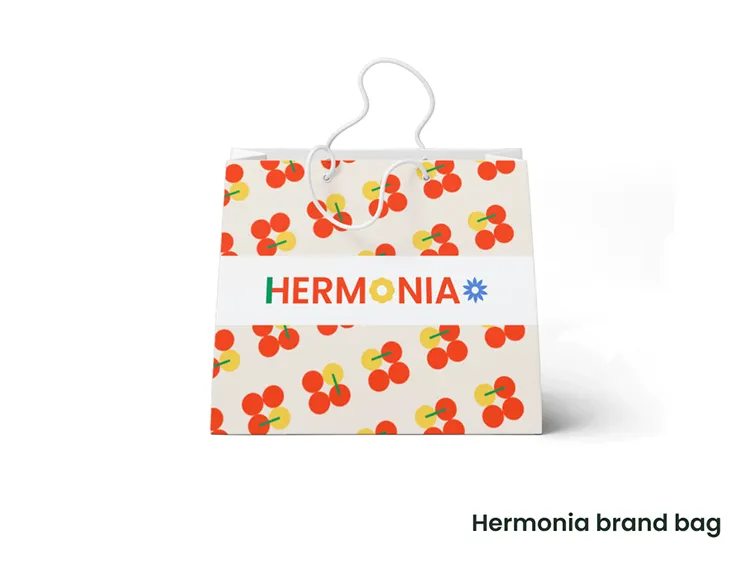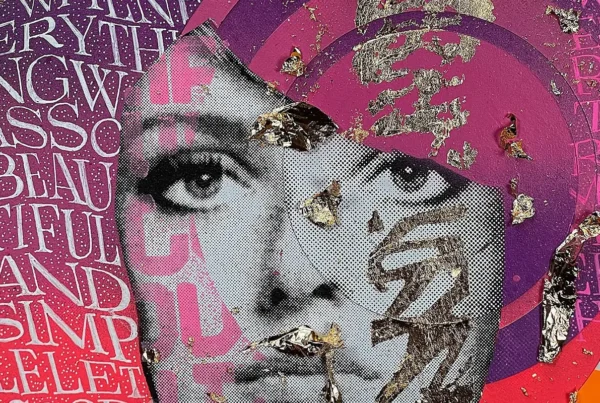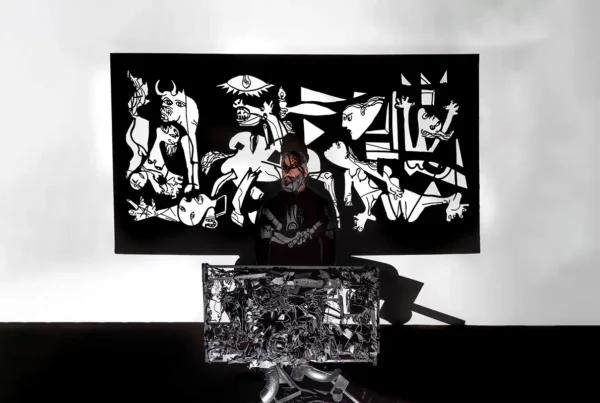“My work does not simply juxtapose heritage with innovation; it challenges the limits of both, creating a new space where the forgotten can reassert itself in the now.”
A Dialogue Between Heritage and Innovation
Yuchan Wu’s artistic journey is rooted in a deep engagement with tradition, yet her work refuses to be confined by nostalgia. Her creative practice exists in the space between inherited wisdom and contemporary aesthetics, where design becomes an act of translation rather than mere reinterpretation. Raised in an environment where folk traditions subtly influenced daily life, she developed an acute sensitivity to the visual language of patterns, materials, and symbolism. For Wu, every artistic decision is a negotiation between past and present—an attempt to redefine how cultural memory can be preserved while remaining relevant in modern discourse.
One of the most striking embodiments of this philosophy is her work on Hermonia Market, a project that goes beyond celebrating feminine craftsmanship and sustainability. Instead, she challenges the way craft is perceived—as more than a decorative or functional practice, but as an intimate, narrative-driven medium. Her Threads of Creation poster series, a key component of the project, does not function as a simple branding effort but rather as a meditation on the invisible labor and stories embedded in artisanal textiles. Similarly, Absurdity explores contemporary contradictions through distortion and paradoxical imagery, questioning the fragility of identity in an era marked by digital flux and cultural fragmentation.
Wu’s approach does not merely juxtapose the traditional with the contemporary—it interrogates their limits, creating new spaces where the forgotten can reassert itself in the now. Her work resists static definitions, instead inviting viewers into an ongoing conversation about the fluidity of heritage and the constructed nature of modern identity. Whether through minimalist design, experimental mixed media, or immersive storytelling, she crafts visual narratives that challenge assumptions, revealing the complexities hidden beneath the surface of familiar forms.
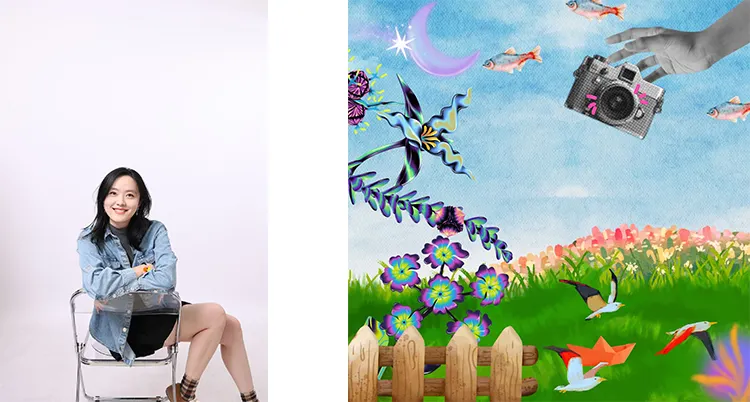
Yuchan Wu: Deconstructing the Familiar to Reveal Hidden Narratives
Wu’s artistic evolution is deeply tied to her ability to see beyond the surface of everyday objects, recognizing the underlying structures that shape cultural meaning. Her earliest artistic inclinations were not centered on drawing or painting but on observing—how a faded textile carried the imprint of time, how symmetry and asymmetry played out in handcrafted artifacts, and how visual motifs held layers of unspoken histories. This attentiveness to the unnoticed details of life became the foundation of her creative process, where traditional forms are reexamined and repurposed as tools for inquiry.
Her projects emerge from a continuous investigation into the ways design can challenge dominant narratives. Hermonia Market, for instance, is not simply an initiative to foster a vibrant artistic community; it is an exploration of how collective craftsmanship can reclaim the discourse around femininity and sustainability in an era dominated by mass production. Through carefully curated visuals and thoughtfully constructed compositions, Wu reshapes the perception of artisanal work, emphasizing its role in cultural storytelling rather than relegating it to the realm of nostalgia. Meanwhile, Absurdity is an attempt to untangle the contradictions of contemporary life. Wu uses abstract and experimental techniques to visualize the perpetual tension between chaos and structure, drawing attention to the absurd beauty found in modern existence.
Her project Wizdrobe takes this exploration even further by addressing the shifting nature of identity in the digital age. Fashion, historically a marker of status and belonging, becomes a fluid, ever-evolving language in her hands—one that reflects the performative nature of self-representation in today’s media-driven society. By merging design with digital storytelling, Wu examines the intersection of clothing, personal expression, and technology, questioning how individuals navigate authenticity in an age where identity is constantly being curated and reconstructed.
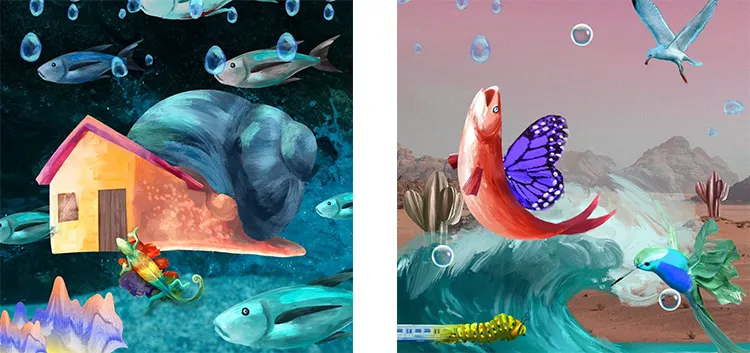
The Art of Balancing Structure and Experimentation
Wu’s artistic style is defined by its ability to merge precision with emotional depth, creating work that is at once minimalistic and richly layered with meaning. Her compositions are meticulously structured, yet they never feel rigid—each design element serves a purpose, contributing to a broader narrative that invites introspection. Whether through warm, saturated colors that evoke nostalgia or the deliberate use of negative space to heighten tension, Wu crafts visuals that resonate on both an intellectual and visceral level.
In Hermonia Market, this approach manifests in a design language that balances historical influences with contemporary clarity. Her Threads of Creation: A Hermonia Journey poster series, for example, weaves a visual narrative that bridges the past and the future, using color palettes derived from traditional pigments while embracing a clean, modern aesthetic. The result is a body of work that feels both timeless and forward-looking, reinforcing her belief that heritage should not be frozen in time but rather continuously reinterpreted. Conversely, Absurdity embraces unpredictability, incorporating elements of distortion and fragmentation to capture the contradictory nature of modern existence. Here, Wu experiments with abstract compositions and mixed media to challenge conventional visual logic, urging viewers to confront the instability of meaning itself.
Her workspace reflects this duality between structure and experimentation. A carefully curated environment filled with art books, traditional artifacts, and contemporary design pieces serves as both a sanctuary and a source of creative stimulation. While she maintains disciplined working habits—allocating specific time blocks for deep focus and minimizing digital distractions—she also allows space for spontaneity. Short meditation breaks and ambient music help her recalibrate, ensuring that her creative process remains fluid and intuitive. This delicate balance between order and exploration enables her to push boundaries while maintaining a sense of cohesion across her projects.
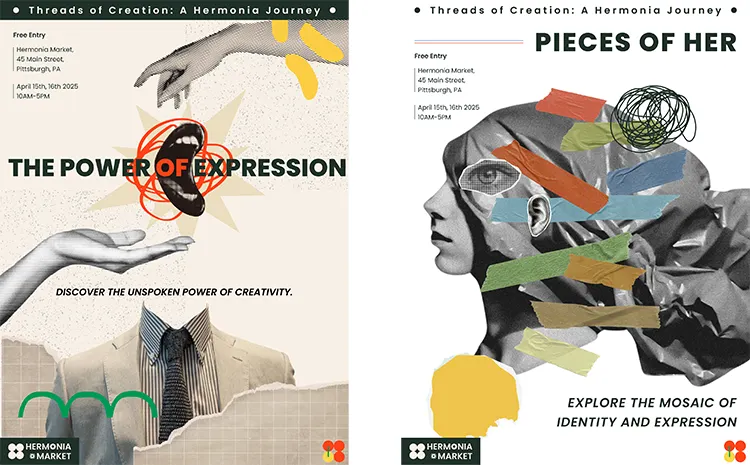
Yuchan Wu: Expanding Art Beyond Passive Consumption
For Wu, artistic impact extends beyond the creation of visually compelling works—it lies in the ability to reshape how art is experienced and engaged with. Her long-term vision is not simply to expand the reach of projects like Hermonia Market, Absurdity, and Wizdrobe, but to transform them into participatory platforms that blur the boundaries between artist and audience. Rather than presenting art as a static product, she envisions it as a dynamic conversation—one that invites co-authorship and challenges conventional modes of artistic engagement.
With Hermonia Market, Wu seeks to move beyond traditional marketplace models, developing a living archive of feminine craftsmanship that does more than preserve history—it reinvents it. Through exhibitions, workshops, and digital residencies, she aims to create a space where tradition is not just documented but actively reshaped through contemporary design. Similarly, Absurdity will continue evolving as an inquiry into modern contradictions, but Wu intends to push it into immersive, interactive formats. By incorporating AI-generated elements, spatial installations, and soundscapes, she hopes to create an experience where viewers are not merely spectators but participants in the deconstruction and reconstruction of meaning.
Her aspirations for Wizdrobe extend beyond fashion photography and digital storytelling. Wu envisions collaborations with designers and technologists to create garments that function not just as clothing but as interactive mediums for self-exploration. By integrating augmented reality and experimental materials, she aims to challenge how people engage with fashion—not just as a form of personal expression but as a tool for exploring the fluidity of identity. Ultimately, her goal is not simply to create art but to redefine how art exists in contemporary culture—pushing beyond passive consumption into a space where viewers become active contributors in shaping its narrative.
.
